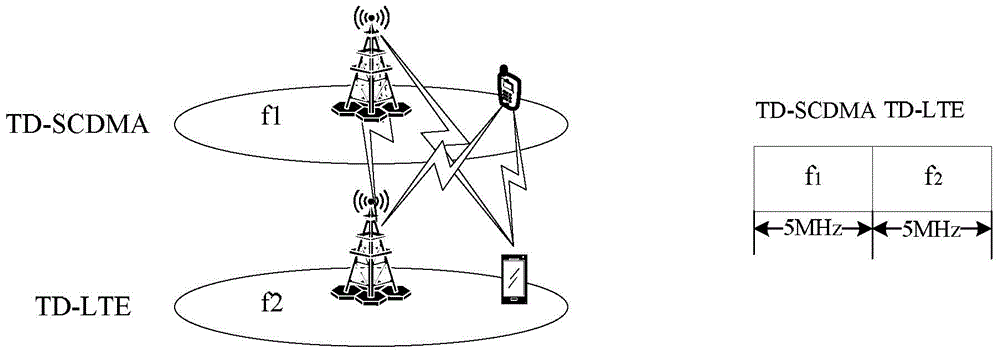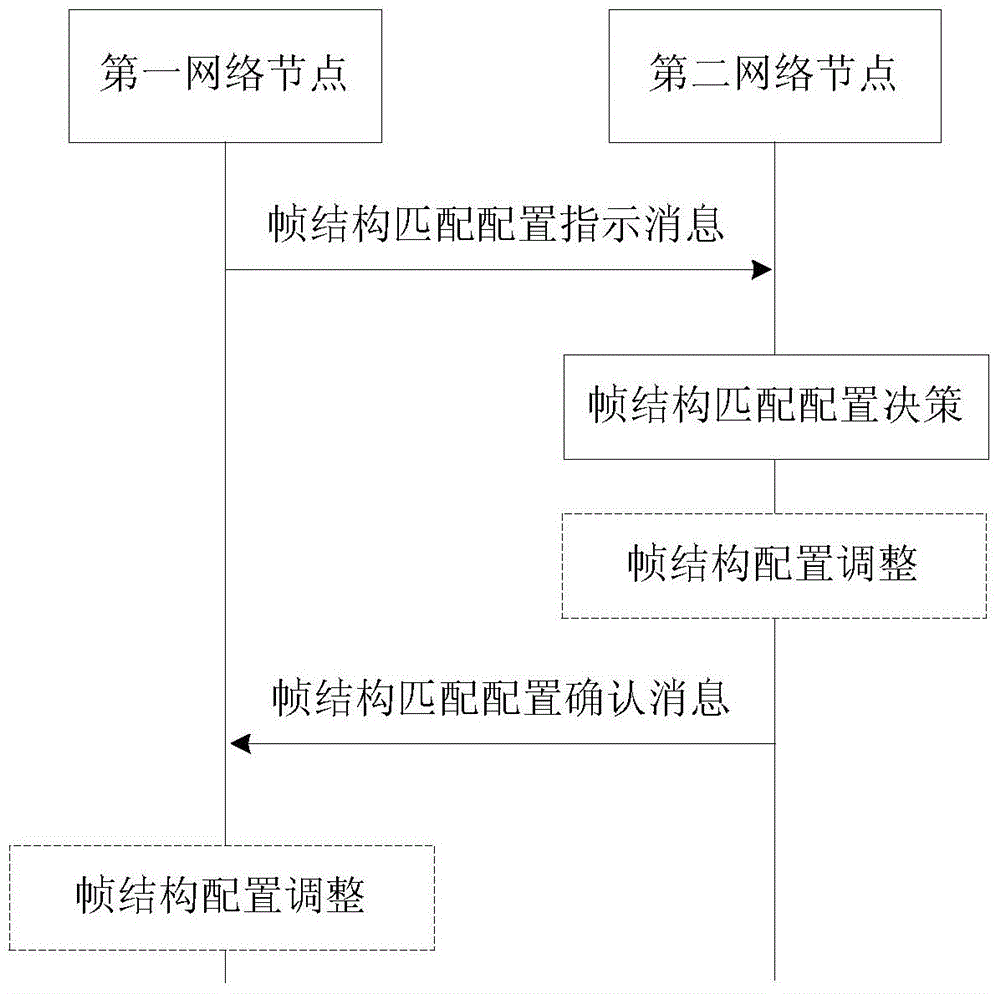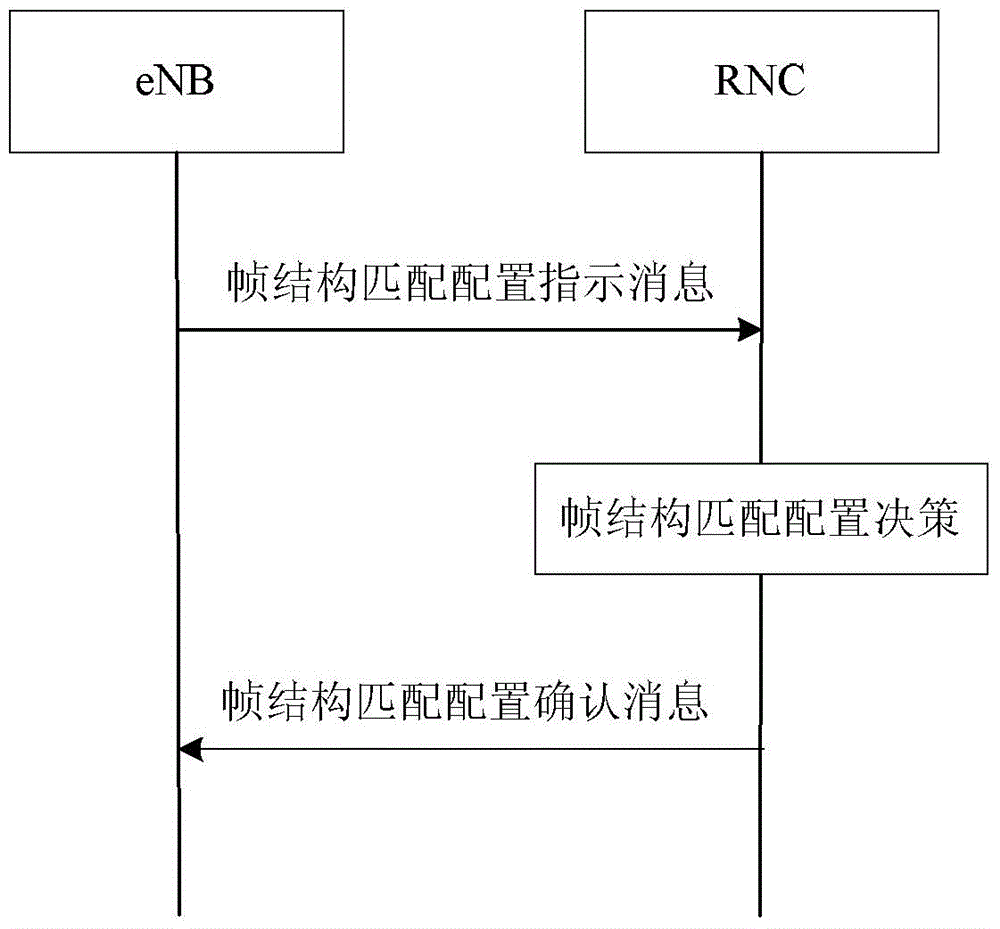Adjacent channel inter-system interference coordination method and device
An interference coordination and inter-system technology, which is applied in the field of adjacent-frequency inter-system interference coordination, and can solve problems such as the mismatch between uplink and downlink between two cells in different systems, the impact of system capacity and communication performance, and the inability of spectrum allocation to coordinate planning between the two systems.
- Summary
- Abstract
- Description
- Claims
- Application Information
AI Technical Summary
Problems solved by technology
Method used
Image
Examples
Embodiment 1
[0138] When the TD-LTE system occupies the 5MHz spectrum resources of the TD-SCDMA system, the flow chart of the embodiment of interference coordination of the TD-SCDMA system cells adjacent to the frequency spectrum is as follows image 3 As shown, there is a direct interface between the base station eNB of the TD-LTE system and the radio network controller RNC of the TD-SCDMA system in this embodiment, and the specific description is as follows:
[0139] Step 1: the first network node eNB sends a frame structure matching configuration indication message to the second network node RNC through a direct interface;
[0140] According to the load statistics in a certain area, the load of the TD-LTE system is relatively high, and the load of the TDSCDMA system is relatively low. According to the decision of the operator or management node, the 5MHz spectrum resources (2015MHz-2020MHz) belonging to the TD-SCDMA system will be dynamically allocated to the TD-SCDMA system. The LTE syst...
Embodiment 2
[0149] When the TD-LTE system occupies the 5MHz spectrum resources of the TD-SCDMA system, the flow chart of the embodiment of interference coordination of the TD-SCDMA system cells adjacent to the frequency spectrum is as follows Figure 5 As shown, in this embodiment, the TD-LTE system base station BS (including the macro station eNB or micro station, such as femto, pico, HeNB, etc.) interacts with the TD-SCDMA system radio network controller RNC through the core network element, and the specific description is as follows :
[0150] Step 1: The second network node BS sends the frame structure matching configuration to the first network node RNC through the core network element MME (Mobility Management Entity) and SGSN (Serving GPRS Support Node, serving general packet radio service technical support node) request message;
[0151] According to the load statistics in a certain area, the load of the TD-LTE system is relatively high, and the load of the TD-SCDMA system is low....
Embodiment 3
[0165] When the TD-SCDMA system occupies the 5MHz spectrum resources of the T-DLTE system, the flow chart of the embodiment of interference coordination of the TD-LTE system cells adjacent to the frequency spectrum is as follows Figure 8 As shown, in this embodiment, the TD-LTE system base station BS (including macro base station eNB or micro base station, such as femto, pico, HeNB, etc.) interacts with the TD-SCDMA system radio network controller RNC through network management side network elements, and the two systems subordinate A cell can be a macro cell or a micro cell, and the specific description is as follows:
[0166] Step 1: the second network node RNC sends a frame structure matching configuration request message to the first network node BS through network management side network elements (Element Management System (EMS) (Element Management System) and Network Management System (NMS) (Network Management System));
[0167]According to the load statistics in a certa...
PUM
 Login to View More
Login to View More Abstract
Description
Claims
Application Information
 Login to View More
Login to View More - R&D
- Intellectual Property
- Life Sciences
- Materials
- Tech Scout
- Unparalleled Data Quality
- Higher Quality Content
- 60% Fewer Hallucinations
Browse by: Latest US Patents, China's latest patents, Technical Efficacy Thesaurus, Application Domain, Technology Topic, Popular Technical Reports.
© 2025 PatSnap. All rights reserved.Legal|Privacy policy|Modern Slavery Act Transparency Statement|Sitemap|About US| Contact US: help@patsnap.com



